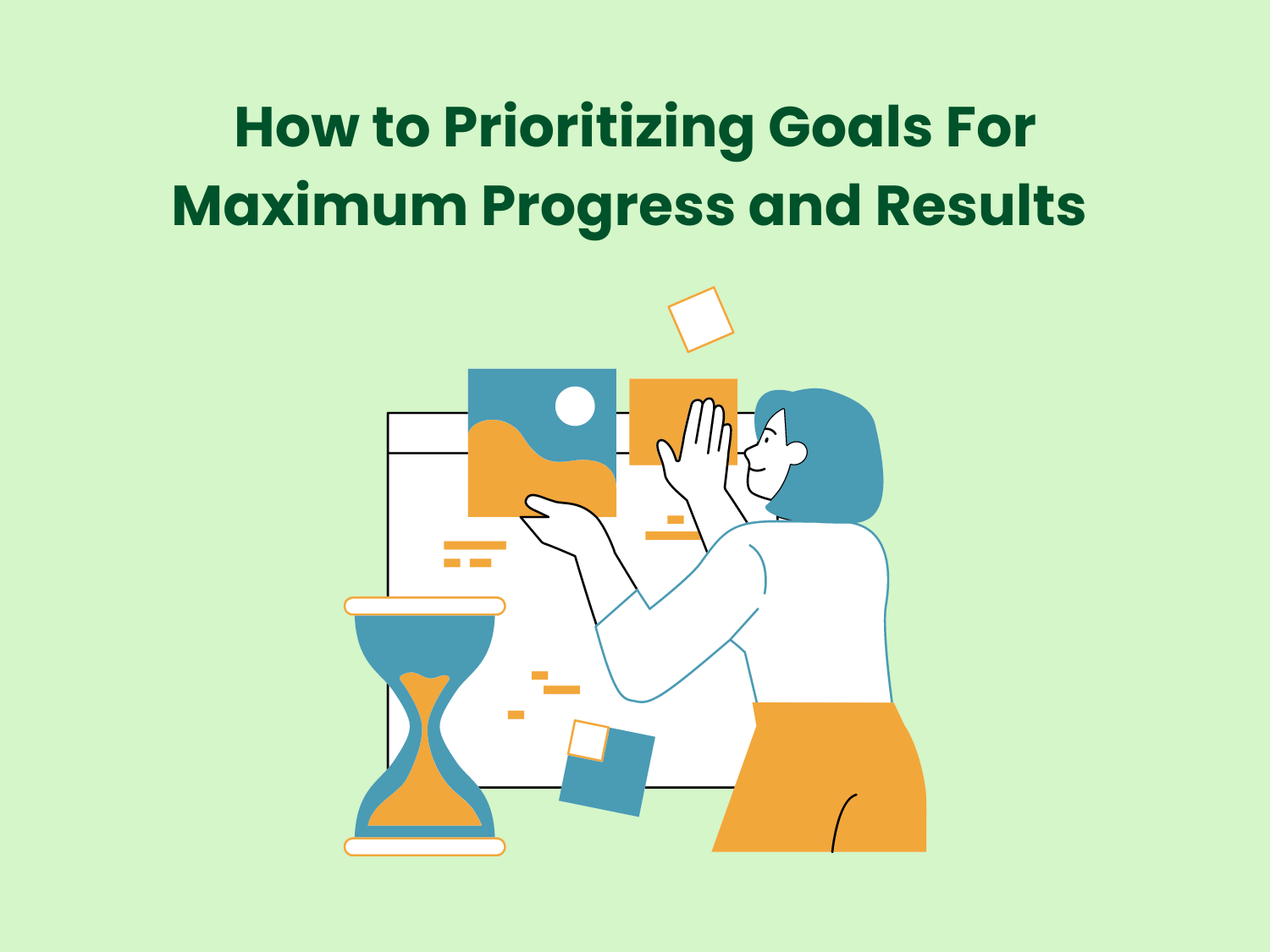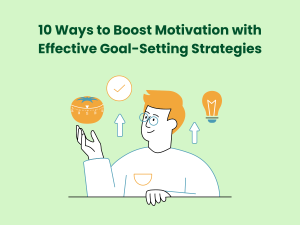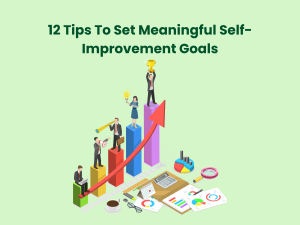With limited time and resources, you can’t pursue every goal equally. Prioritizing goals strategically and directing efforts towards high-impact objectives accelerates success. Focus on the vital few instead of the trivial many. Align efforts with what makes the most significant difference.
Benefits of Goal Prioritization
Goal prioritization offers numerous benefits that contribute to personal and professional success. Here are some key advantages:
- Clarity and Focus:
- Prioritizing goals brings clarity to your objectives, helping you focus your efforts on what truly matters. It eliminates distractions and allows you to direct your energy toward the most critical tasks.
- Effective Time Management:
- Knowing your priorities helps you allocate your time more effectively. You can concentrate on high-priority tasks and avoid spending excessive time on less critical activities.
- Increased Productivity:
- Concentrating on the most crucial goals can enhance your overall productivity. Prioritizing tasks ensures you’re working on what matters most, leading to better outcomes.
- Motivation and Commitment:
- Prioritized goals provide a sense of purpose and motivation. When you understand the significance of your goals, you’re more likely to stay committed and overcome challenges.
- Better Decision Making:
- Prioritization aids decision-making by providing a framework for evaluating options. You can make informed decisions based on aligning choices with your prioritized goals.
- Improved Time and Resource Allocation:
- Allocating resources, such as time, energy, and finances, becomes more efficient when you know your priorities. You can direct resources toward high-impact activities, optimizing your chances of success.
- Reduced Stress and Overwhelm:
- Knowing your priorities reduces stress and feelings of overwhelm. When you have a clear plan and focus on essential goals, you’re less likely to feel stretched thin or burdened by numerous tasks.
- Strategic Planning:
- Prioritization is a crucial component of strategic planning. It allows you to create a roadmap for achieving your goals, making setting milestones and tracking progress easier.
- Goal Achievement and Success:
- Prioritizing goals increases the likelihood of goal achievement. By concentrating on the most important objectives, you set yourself up for success in both short-term and long-term endeavours.
- Adaptability to Change:
- Prioritization fosters adaptability. When unexpected changes occur, having a clear set of priorities allows you to adjust your plans while staying focused on your most critical objectives.
- Personal Growth:
- Prioritizing goals often involves pursuing activities contributing to personal growth and development. This continuous improvement enhances your skills and capabilities over time.
- Enhanced Work-Life Balance:
- Prioritizing goals helps you strike a balance between various aspects of your life. Focusing on what matters most, you can achieve your goals without sacrificing your overall well-being.
Goal prioritization is a valuable skill that positively impacts various facets of life. It empowers individuals to make deliberate choices, stay focused, and achieve meaningful success.
How to Prioritizing Goals
Follow a systematic process when prioritizing goals:
1. List all goals – Capture all current goals across categories like career, financial, health, etc.
2. Classify goals – Categorize goals based on long-term, medium-term and short-term horizons.
3. Rate importance – Weigh each goal’s importance and expected impact when achieved.
4. Rate urgency – Assess the urgency of the goal based on deadlines.
5. Identify dependencies – Note the prerequisites of completing other goals first.
6. Rank goals – Order goals from highest to lowest priority based on importance, urgency, and dependencies.
7. Assign resources – Allocate your time, energy and resources weighted by priority.
Continually assess and balance priorities as goals and situations evolve.
Setting Goal Priorities in Key Areas
Proper prioritization amplifies results across domains like:
Career – Rank career goals by long-term income growth and advancement potential. Pursue visibility and high-impact projects.
Financial – Focus first on securing emergency savings, paying high-interest debt, and maximizing the employer match retirement savings.
Health – Prioritize exercise consistency, nutrition and sleep over one-off diets or fitness fads. Address any conditions needing immediate attention.
Personal Growth – Prioritize strengths you are passionate about but also pragmatically align with opportunities.
Relationships – Reserve time for family and close friends before a more comprehensive social network. Postpone goals if they overly sacrifice personal life.
Household – Complete urgent repairs before the imperfect home organization. Handle critical paperwork before decluttering.
Continuous calibration ensures you direct limited bandwidth to what matters most.
Tips for Optimizing Goal Priority
Optimizing goal priority is crucial for adequate time and resource management. Here are 10 tips to help you optimize and refine your goal priorities:
- Regularly Review and Adjust:
- Goals and priorities can change over time. Set aside regular intervals to review your goals and adjust priorities based on your current circumstances, achievements, and evolving aspirations.
- Align with Values:
- Ensure that your goals align with your core values. Goals that resonate with your values are more likely to bring fulfilment and motivation, making them a higher priority.
- Focus on High-Impact Goals:
- Identify goals that will significantly impact multiple areas of your life. Prioritize goals that bring about positive changes in various aspects, creating a ripple effect.
- Balance Short-Term and Long-Term Goals:
- Maintain a balance between short-term and long-term goals. Prioritize a mix of goals that provide immediate satisfaction and those that contribute to your long-term vision.
- Consider Resource Allocation:
- Evaluate the resources (time, energy, and finances) required for each goal. Prioritize goals that align with your current capacity and allocate resources accordingly.
- Break Down Larger Goals:
- If you have significant, complex goals, break them down into smaller, more manageable tasks. Prioritize the smaller tasks to progress on the overarching goal without feeling overwhelmed.
- Prioritize Learning Goals:
- Prioritize goals involving learning and skill development. Continuous learning contributes to personal growth and can enhance your ability to achieve other goals.
- Address Urgent Goals Strategically:
- While addressing urgent goals is essential, don’t let constant urgency dictate your priorities. Assess whether the urgency aligns with the importance of the goal and prioritize accordingly.
- Embrace Flexibility:
- Be open to adapting your goals and priorities based on changing circumstances. Flexibility allows you to navigate unexpected challenges and opportunities without feeling constrained.
- Delegate or Seek Support:
- If possible, delegate tasks or seek support for goals that may not align with your strengths or are time-consuming. This allows you to focus on high-priority tasks that require your unique skills.
Remember, goal prioritization is a dynamic process that requires ongoing attention and adjustment. By implementing these tips, you can optimize your goal-setting strategy and make efficient progress towards achieving your aspirations.
Common Challenges
Here are solutions to common obstacles that inhibit goal prioritization:
1. Unclear Importance – Assess how each goal aligns with your core values and overall life vision.
2. Too Many Goals – Limit active goals to 3-5 critical ones. Park others for now.
3. Getting Distracted – Block time for high-priority goals on the calendar. Limit interruptions.
4. Poor Time Management – Identify the most significant time drains. Schedule priorities before checking emails or social media.
5. Difficulty Saying No – Turn down possible questions unrelated to priorities. Enlist support in declining politely.
6. Perfectionism – Stick with good enough on lower priorities. Perfect execution, just on vital goals.
7. Lack of Structure – Create routines and systems to operate on autopilot where possible.
Consistent focus on executing the right goals drives extraordinary outcomes. Keep your eyes fixed on the essential.
Conclusion
In the end, actively prioritizing your goals not only progresses achievement faster but also grants peace of mind. You benefit by playing from your strengths, using your best effort on top priorities while lowering stress around what you can’t tackle yet. This balanced, purposeful approach creates lasting fulfilment.
The freedom to fluidly pursue your changing purpose without distraction or internal conflict lies in taking command of your goals. So, regularly review and thoughtfully order your priorities using the helpful frameworks above for the masterful direction of your one precious life.
Frequently Asked Questions
Q: How often should I reevaluate my goal priorities?
A: Review your goals monthly and re-prioritize as needed, but also stay agile day-to-day. If new realities or inner guidance shifts your purpose, have the courage to immediately reassign importance levels accordingly.
Q: Is rigidly sticking to goal priorities helpful?
A: Flexibility is key. While your frameworks provide essential direction, listen when your soul nudges you toward different needs. Stay attentive and dynamically responsive.
Q: What if I can’t decide between two equally important goals?
A: Notice if one goal empowers faster progress or capability for the other. Perhaps alternate full effort between both month-to-month. Or increase efficiency to pursue simultaneously by leveraging helpful tools, resources or team support. Get creative.
Hope this gives you ideas for effectively prioritizing goals on your purpose path! Let me know if you have any other questions.



